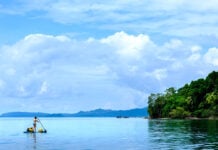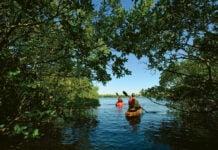From the field station near his home on remote Denny Island and the small research boats on which he spends up to half the year, Pacific Wild co-founder and conservation photographer Ian McAllister has devoted himself to documenting and protecting the coastal wilderness of the Great Bear Rainforest.
Draping the British Columbia coast from Vancouver Island to the B.C.-Alaska border, the Great Bear Rainforest is a richly interconnected web of ecosystems and wildlife. Together, the moss-cloaked forests, estuaries, islands, coastal waters and mountains encompass more than 64,000 square kilometers.
“It’s so vast—half the Pacific coast of Canada—many paddlers are shocked by the distances needed to travel,” says McAllister. The rewards, however, are great. “Sharing this primeval forest, the whales and bears, with so few other people is an exceptional experience in this day and age.”
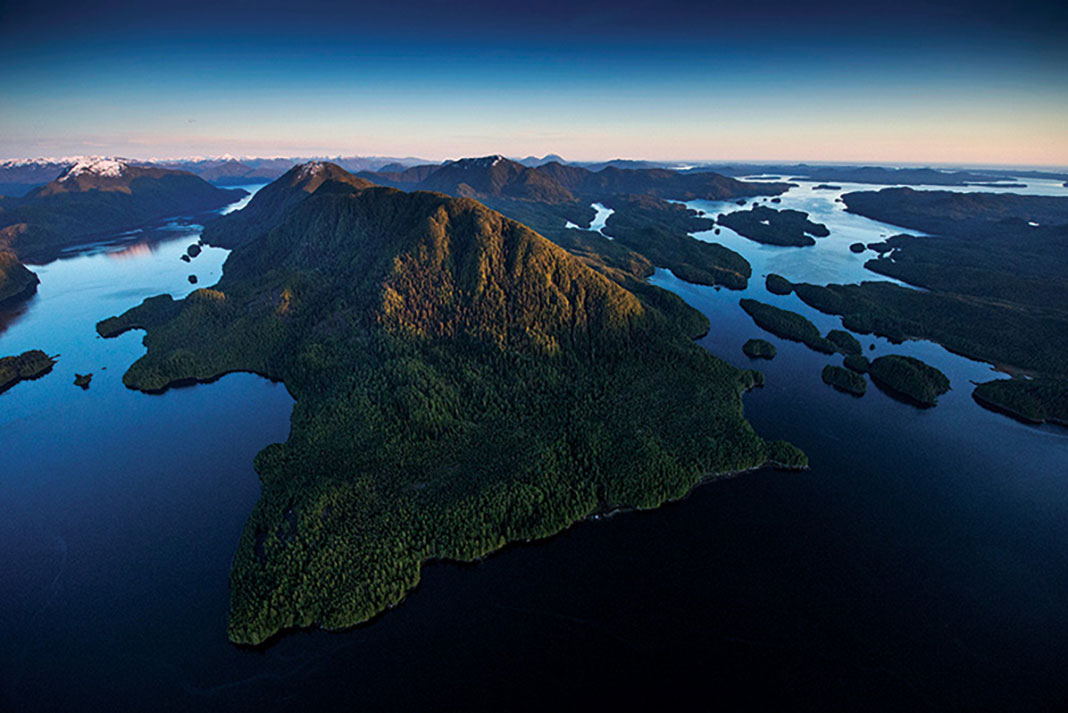
“I came to the Great Bear Rainforest over 20 years ago. Back then, it was known only as the Mid Coast Timber Supply Area. It was then, and still is, the most intact, magnificent, but very much threatened, temperate rainforest remaining in the world.”
That initial voyage of exploration led to McAllister and Pacific Wild’s work designing conservation plans for the rainforest. “It’s taken a long time to do that baseline inventory and better understand the areas that really need protection,” he says. “Emerging threats have kept us very busy over the years—from open-gate salmon farms and unsustainable fisheries to clear-cut logging and oil-tanker traffic. There’s certainly never been a dull moment.”
Visiting the Great Bear Rainforest
If you have a day
Paddle out of Prince Rupert and explore the convoluted bays and islands of Venn Passage. Look for the Tsimshian petroglyphs that dot the shores.
If you have a long weekend
Ride the ferry to Shearwater and paddle around Cunningham Island, plying peaceful and lightly traveled passages.
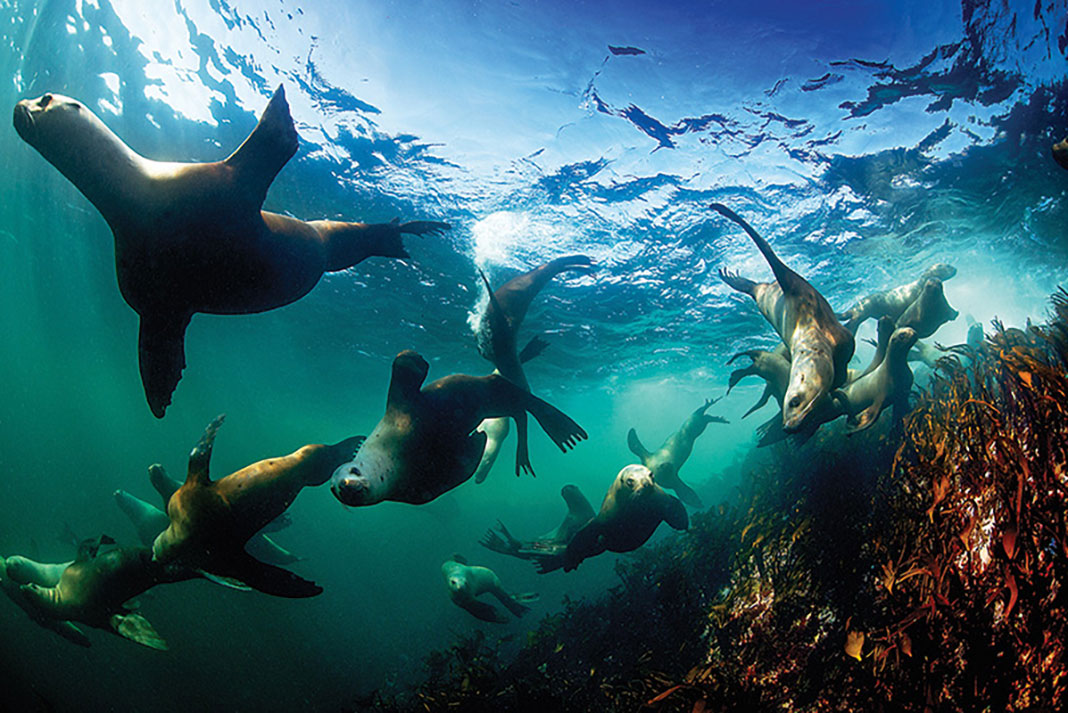
If you have a week
Experienced paddlers can take a passenger ferry or water taxi from Prince Rupert to Hartley Bay, then kayak around Gribbell Island. There’s no camping on the island itself, but surrounding channels are home to scenic coves, dramatic mountains, waterfalls, hot springs and one of the highest concentrations of spirit bears.
If you have two weeks journey north from Port Hardy via Cape Caution to Bella Bella or Shearwater, with an exploration of the spectacular Hakai Luxvbalis Conservancy Marine Park. Long crossings, distance and isolation make this an adventurous route for seasoned paddlers.
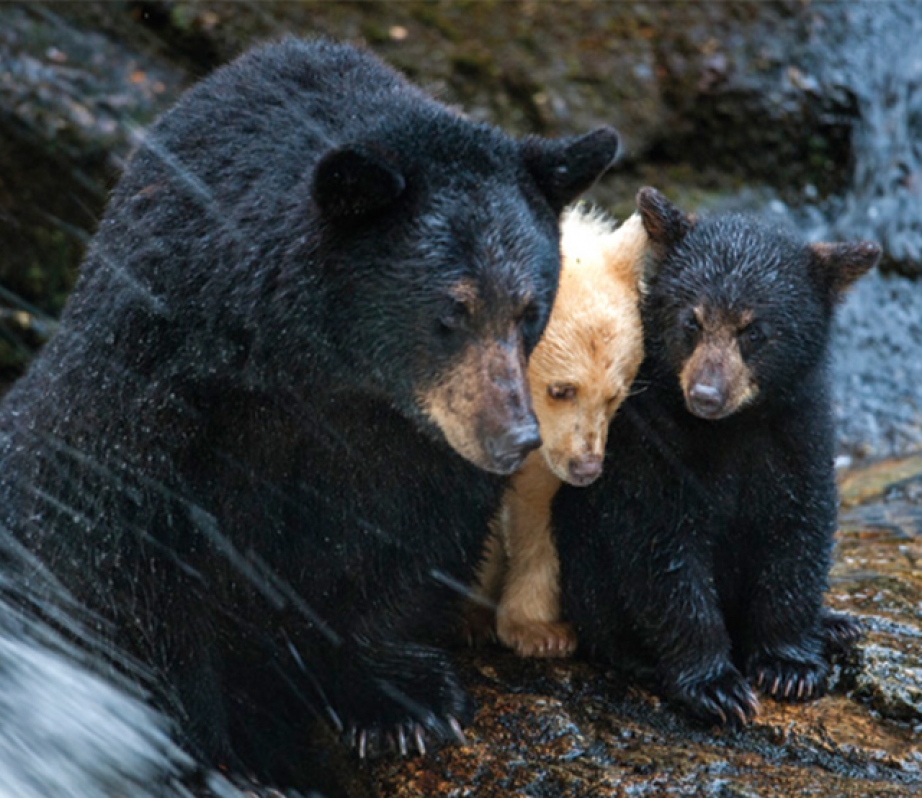
What awaits you in Great Bear
Wildlife
Wolves, cougars, grizzly and black bears, rare white spirit bears, deer, whales, sea lions, eagles and wild Pacific salmon.
Terra
Beaches, upland clearings and cabins; some areas are steep-walled and densely forested, camping may be difficult.
Exposure
Cool, wet and highly variable weather; swift currents in some island passages.
Challenges
Vast, remote coastline with few communities, infrastructure or amenities. Check with B.C. Ferries for current schedule and paddler pick-up/drop-off policy.
Diversion
Arrange a visit to the cetacean research lab and listen to whales at Pacific Wild’s field station near Shearwater on Denny Island.
Outfitters
Mothership Adventures
Multi-day, mothership-supported kayak tours.
Kingfisher Wilderness Adventures
14-day kayak camping expeditions.
Outer Shores Expeditions
Multi-day wildlife and cultural journeys aboard a classic wooden schooner.
Must-have
Plenty of time, flexible schedule.
Seals cavort in the waters of the Great Bear Rainforest. | Feature photo: Ian McAllister/Pacific Wild



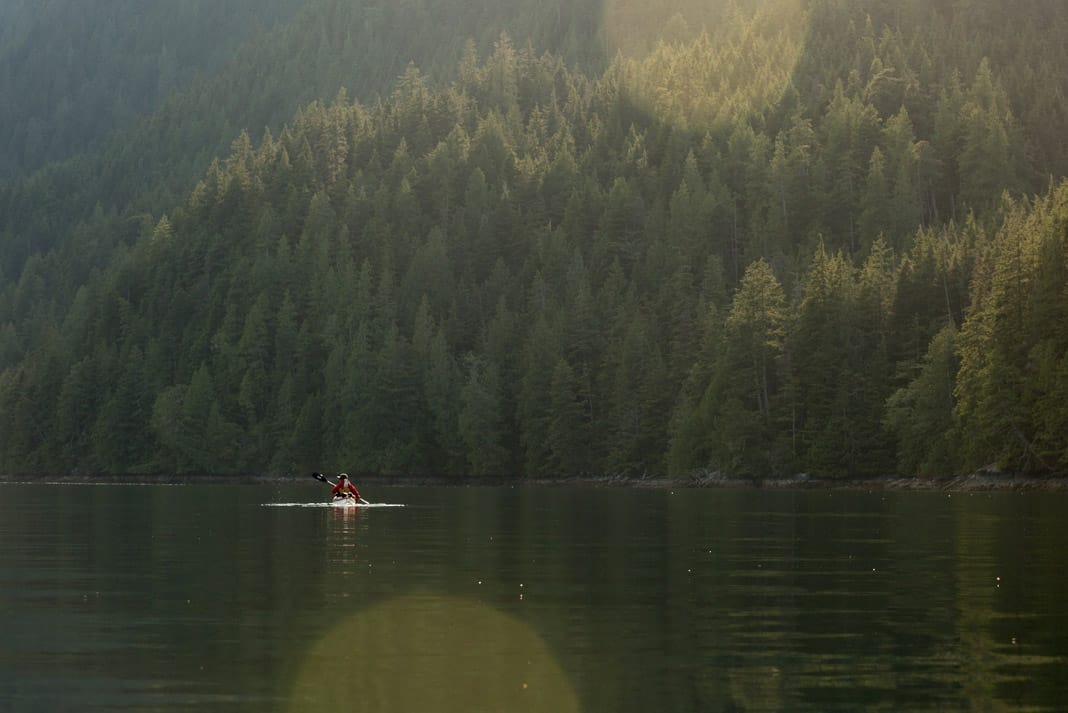
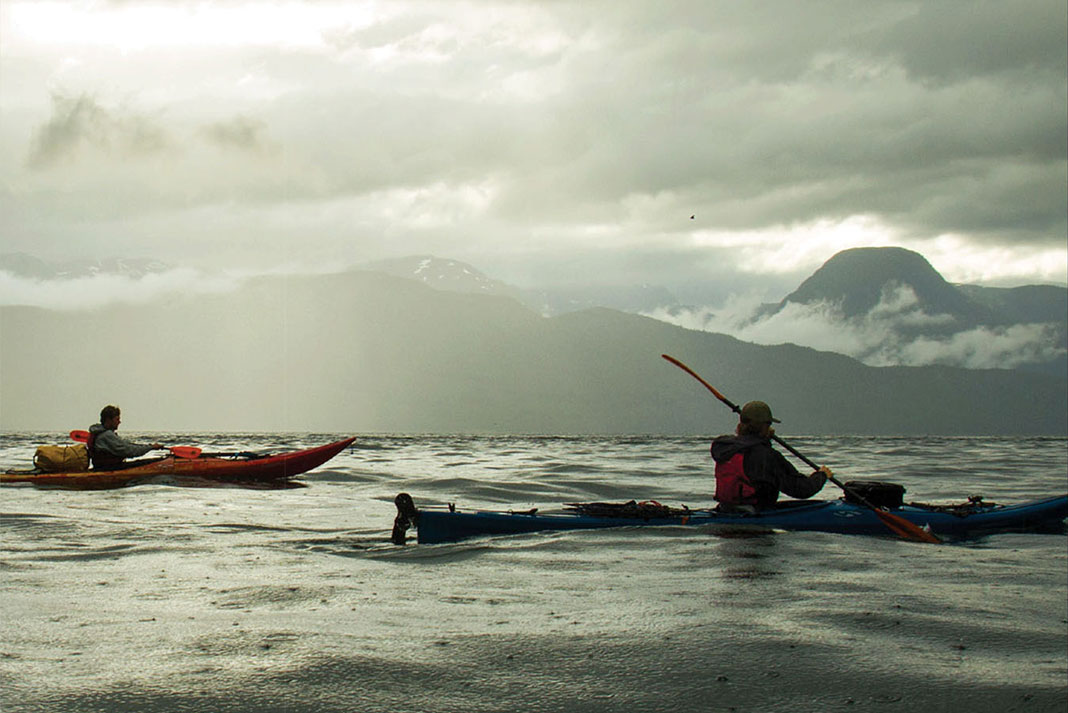
 This article was first published in the Early Summer 2016 issue of Adventure Kayak Magazine.
This article was first published in the Early Summer 2016 issue of Adventure Kayak Magazine. 